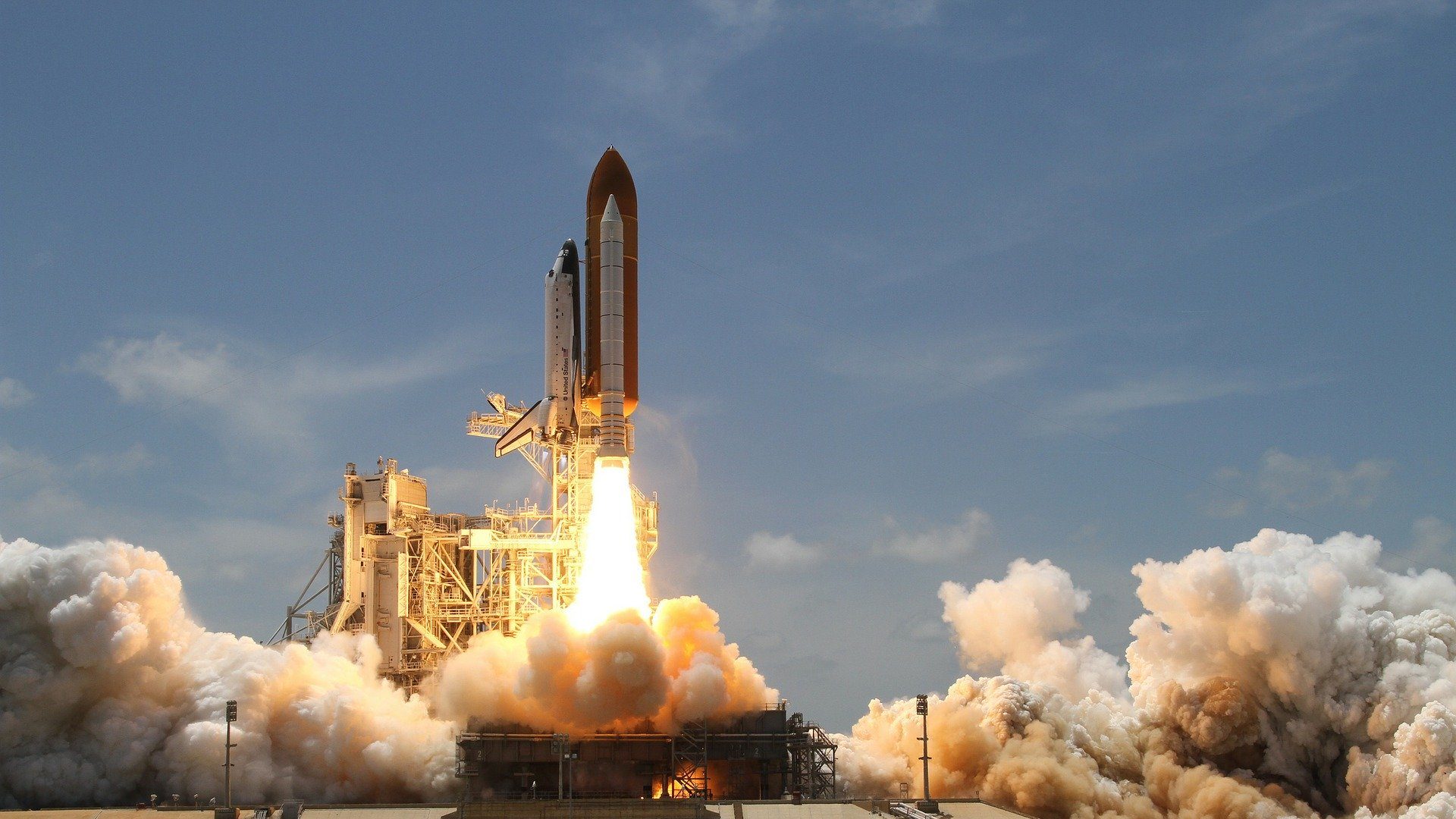Post written by Charlotte Conway, Public Programs Coordinator.
Daily Discovery: Rocket Power – Engineering Challenge
Engineers design rockets that can leave our planet and travel through space! But how do they build spacecraft that can fly there? Through this balloon rocket demonstration, see firsthand how a jet engine works to propel rockets into outer space!
Supplies:
- Balloon
- String (fishing string or a fine, smooth string is preferred)
- Drinking straw
- 2 supports to tie your string to – Chairs, a railing, and/or door knob work (make sure they are level in height)
- Tape or glue dots
- Tape measure or ruler
- Pencil
- Paper
- Colored pencils (optional)
- Clothespin or binder clip (optional)
Instructions:
- To demonstrate how a rocket moves, you are going to make a balloon rocket. The balloon rocket is propelled, or caused to move, by the air rushing out the end. Think of the balloon as your rocket’s engine, or propulsion system, and the air inside as your jet fuel!
- Begin with your straw. Straight drinking straws work best the best, but if you have a bendy straw, cut off the part that bends and keep the straightest segment.
- Now tie one end of the string to a chair, railing, or doorknob. This is where your balloon rocket will fly to. If you would like to, draw a picture of a planet you would like to visit and tape your drawing to the chair or railing.
- Thread the free end of the string through the straw. Tie the other end of the string to the other support (chair, railing, or doorknob).
- Blow up the balloon to its maximum capacity, being careful not to pop your balloon! Hold the end closed. Don’t tie your balloon shut. Keep it pinched closed with the help of a friend, or you can use a clothespin or binder clip to keep it closed.
- Attach the balloon to the straw using tape or glue dots.
- 3…2…1… Blast off! Let go of the balloon’s end and see how far it flies!
- Use your tape measure or ruler to measure how far your rocket traveled on the first launch. Print the table below, or draw the table on your own paper to track your results. Write down the distance traveled for each launch, making sure to write down how much ‘fuel’ (air) was inside your balloon and the launch number.
- Repeat steps 5-8 to launch your balloon two more times, for a total of three launches.
- Repeat steps 5-8, but on step 4, instead of blowing up the balloon to maximum capacity, blow the balloon up to ¾ air capacity and repeat the launch 3 times. Follow the same procedure to launch the balloon with ½ air capacity and again with ¼ air capacity.
- Compare the data from your launches. What conclusions can you draw from your data? Is the distance your balloon traveled related to how much air was in your balloon?
Want to download these directions? Click here for a handy PDF!
Follow along with our Daily Discovery! Click here for all activities that you can do at home.

